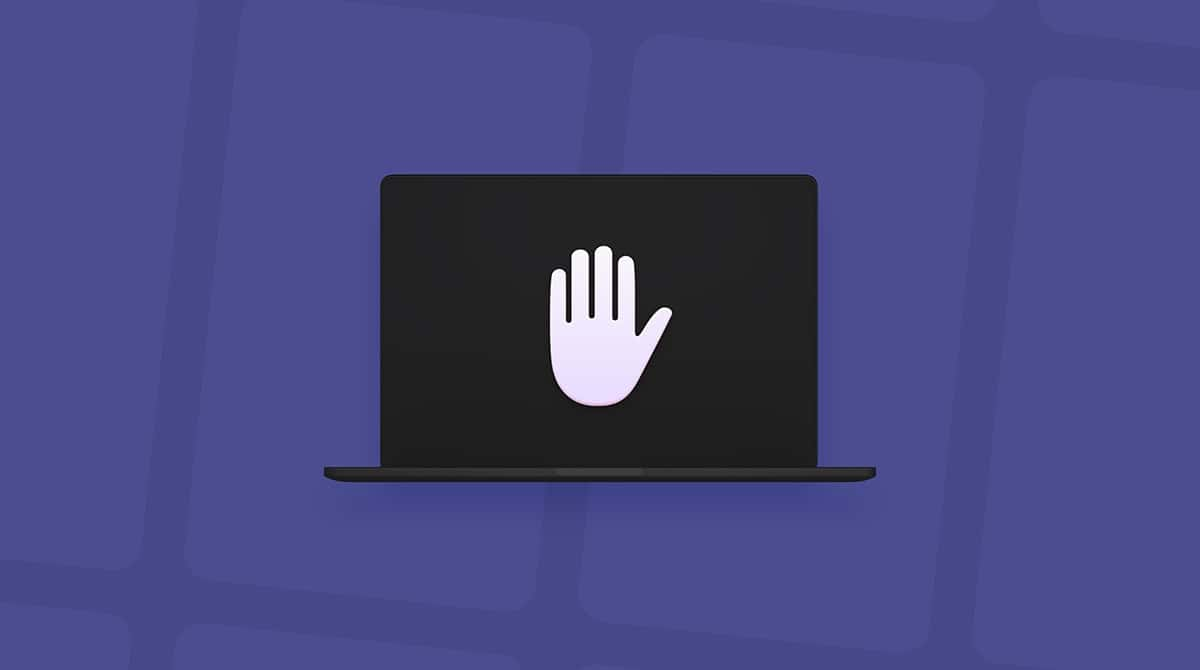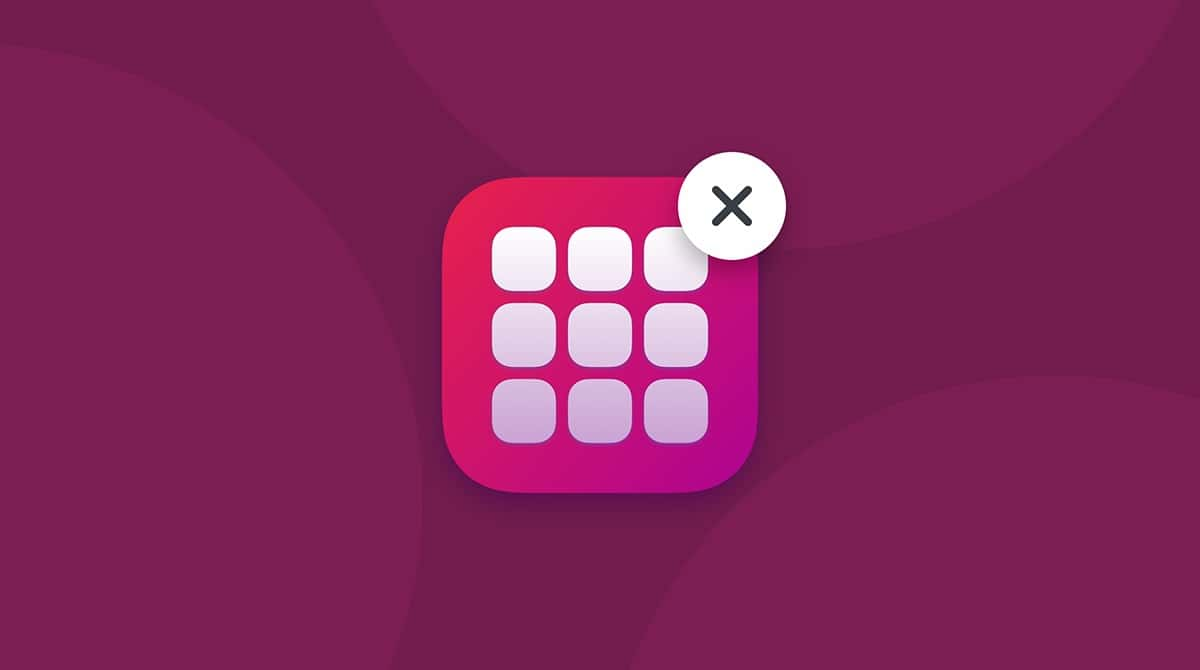If you use Google Chrome to browse the web or to work in Google Docs, and it starts behaving erratically, or you start seeing lots of intrusive adverts, it’s likely that the browser has been infected with malware.
While frustrating and sometimes alarming, it’s not necessarily harmful to your Mac. Nevertheless, it’s best to get rid of it as soon as you realize it’s there. In this article, we’ll explain how to remove malware from Chrome, so let’s go.
_1623405870.png)
What is Google Chrome virus?
Google Chrome virus is a browser hijacker — a malware type designed to change browser settings without the user’s knowledge. It is also scareware aimed at making the user believe that they should download some software (malicious, obviously) to solve problems their Macs don’t even have and adware characterized by tons of unwanted pop-ups.
| Name | Google Chrome virus |
| Category | Browser hijacker, adware, scareware |
| Symptoms | Suspicious redirects, suspicious banners, changes to homepage, and unwanted browser extensions |
| Infection method | Bundling, fake Flash Player updates, torrent downloaders |
| System damage | Hijacked browsers, tracking, and stealing personal information |
| Removal | Manual removal, CleanMyMac Malware Removal tool |
How to know if Google Chrome has a virus
There are a number of signs that you have Chrome malware on your Mac:
- Increased resource consumption: Chrome starts running very slowly and using up lots of processor cycles. Often, the first sign is that your Mac’s fans start running loudly when you’re not doing anything that’s processor-intensive. If that happens, you can use Activity Monitor to confirm that it’s Chrome that’s stressing the CPU.
- Suspicious banners and unwanted ads: You start seeing adverts unrelated to any website you’ve visited or search terms you’ve used.
- Browser changes: A browser toolbar you didn’t deliberately download appears in your copy of Chrome. You may also notice browser extensions you haven’t installed.
- Intrusive pop-ups: Pop-up windows frequently appear on sites that don’t normally use pop-ups.
- New apps appearing on your Mac: You discover an application in your Applications folder that you didn’t download.
If you notice any of these signs, it’s necessary to scan Chrome for malware right away. Keep on reading to find out how to do it quickly.

How to get rid of Chrome virus
Removing malware from Chrome is not an overly complicated task. There are two ways to do it — the easy way using a dedicated tool and the manual one.
The easy way: Check your Mac with CleanMyMac
CleanMyMac by MacPaw is a tool that looks for Mac-specific viruses. This one is notarized by Apple.
The app might be able to detect adware, spyware, worms, ransomware, and other vulnerabilities and hazards. Here’s how to use it:
- Get your free CleanMyMac trial and open the app.
- From the sidebar, click Protection and hit Scan. Wait for a few minutes for the scan to complete.
If CleanMyMac finds something suspicious, it will offer immediate removal.
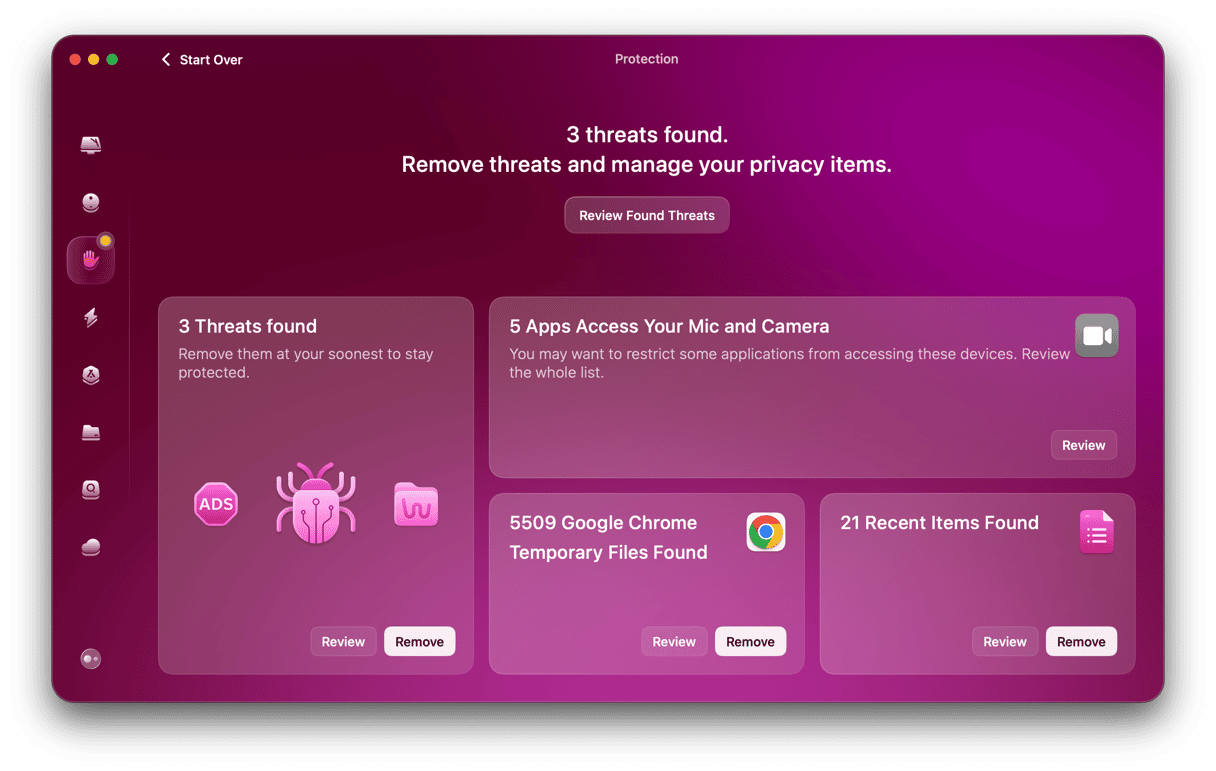
The manual way
1. Uninstall suspicious apps
Google recommends that when you discover adware or other malware, the first thing you should do is identify and get rid of any applications in your Applications folder that you suspect may be malicious.
- Open the Finder window and go to Applications.
- Look through the list of applications and identify any you didn’t download deliberately.
- If you find one, you should remove it. However, just dragging the app to the Trash won’t get rid of every trace of the application. To do that, you need to remove every file associated with the app.
How to safely remove every trace of an application
You can safely remove unwanted apps, along with their leftovers, with the help of an app we’ve mentioned above — CleanMyMac. It knows where to look for files installed by apps and searches for them there, then lists them when it finds them, allowing you to delete them easily.
If you’ve already downloaded and installed CleanMyMac, start using it right away. Go to the Applications tool in the sidebar and run a scan. Now, click Manage My Applications to access the Uninstaller tool. Select the box next to the app you want to delete and click Uninstall. That’s it!
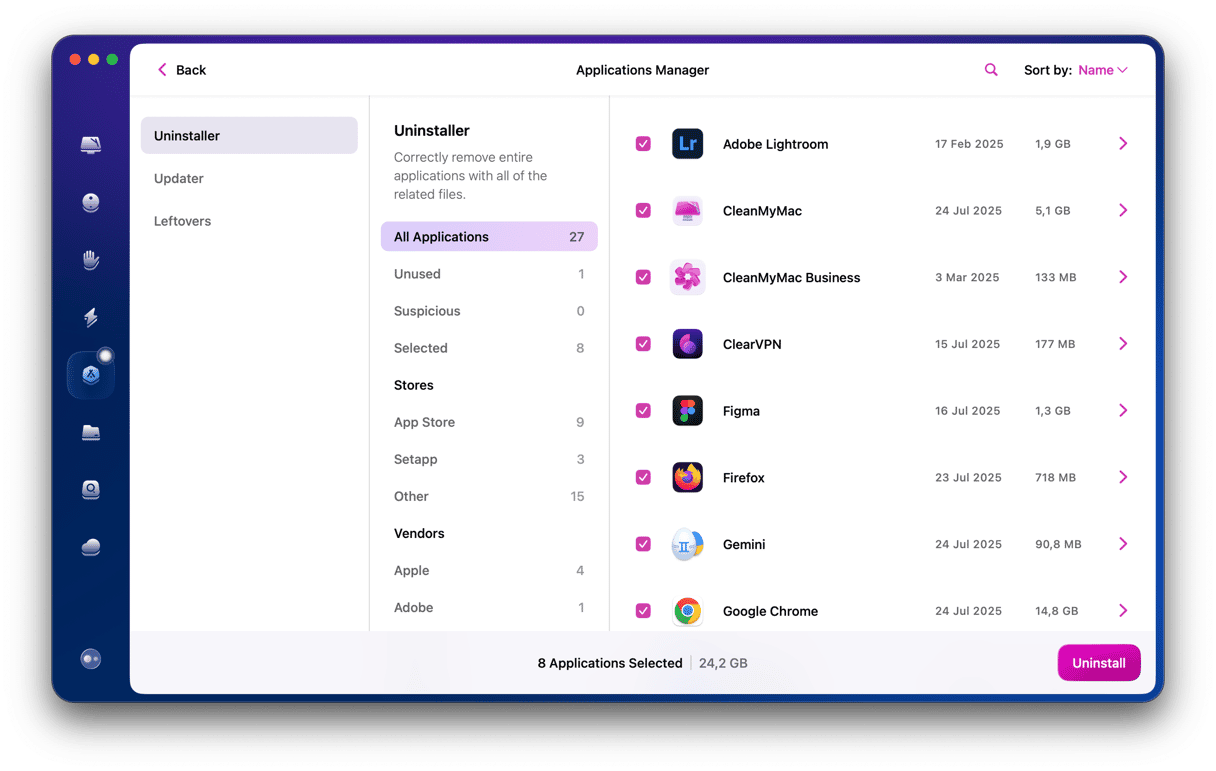
Repeat the process for every app you suspect is malware.
2. Reset Chrome settings
If you don’t find any apps in your Applications folder that look like they’re malware or removing them doesn’t solve the problem, the next step is to reset Chrome’s settings.
- Open the Finder window, go to Applications, and open Chrome.
- At the top right of the window, click the ‘More’ icon (three dots stacked vertically).
- At the bottom of the menu, click Settings.
- Scroll to the bottom again and click Reset settings.
- Read the information in the box that appears, then click Reset.

Resetting Chrome, among other things, turns off extensions. If you need to use extensions, you’ll need to turn them back on again. However, before you do, it’s a good idea to go through them and check that you intended to download them. If you find any that you didn’t intentionally download or that you no longer need, you should delete them.
3. Remove extensions or turn them on again
- In Chrome, click the More button again.
- Click Extensions > Manage Extensions.
- Look through the installed extensions. If you see any you didn’t intend to download or no longer need, click Remove.
- If you suspect it’s malware, select the Report abuse box.
- Click Remove.
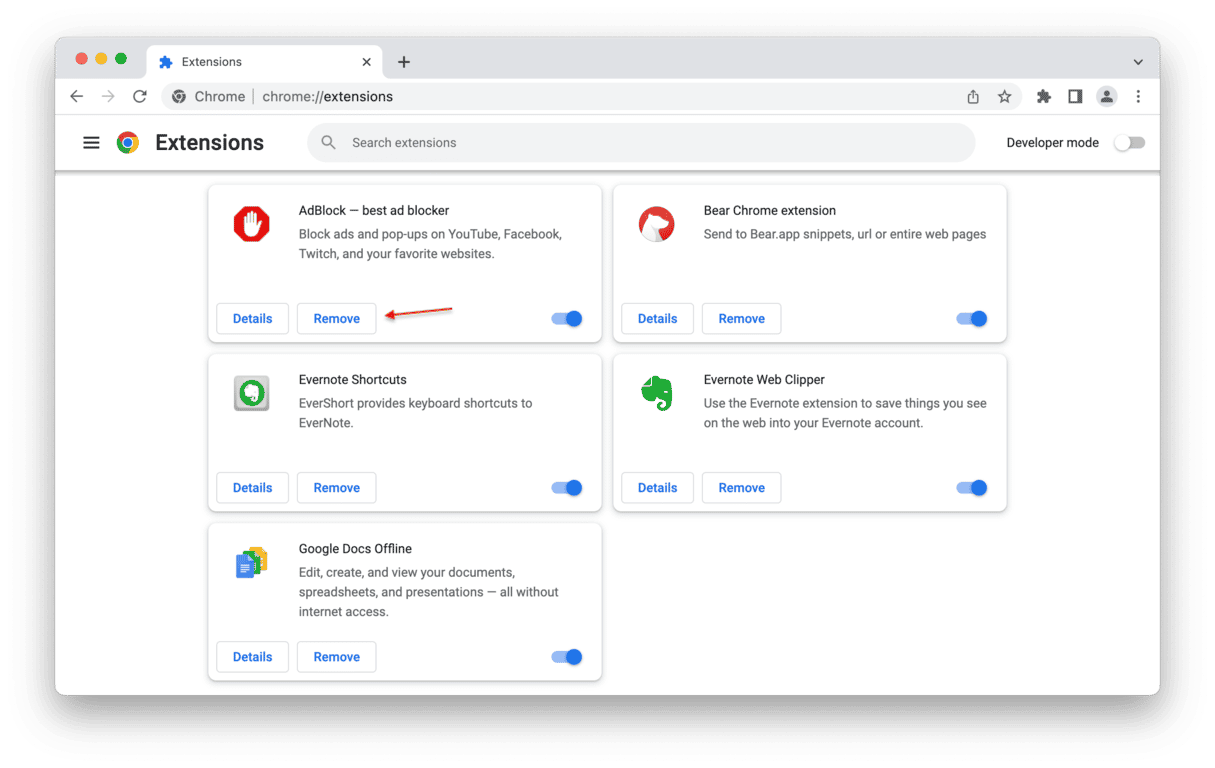
To turn an extension back on again, click on the toggle switch at the bottom right-hand corner of the extension box.

How to protect Chrome from malware
Now that you know how to remove malware from Chrome, it is also essential to become familiar with some simple protection tips.
1. Don’t click suspicious links
Email accounts for 90% of malware out there. There will always be virus emails in your inbox, often posing as existing services like Apple or Amazon.
Always check where the link leads: hover your mouse pointer over the link, and it will display the destination address. That could be radically different from what it claims to be.

By the way, one of the most common ways that malware disguises itself is as updates to Adobe Flash Player. Given that most websites no longer use Flash, it’s safest to remove it from your Mac altogether. That way, you won’t be tempted to download a spoof update.
2. Make sure your Mac’s Firewall is turned on
You’ll find the switch in Network settings in System Settings.

3. Use a non-admin account on your Mac
This tip may surprise you, but most viruses need your admin privileges to be able to make any changes. How to prevent it? Simply use a non-admin account — a standard account that has no privileges to adjust core system settings. The virus activity will be contained within those limits.
- Open System Settings > Users & Groups.
- Click Add account, type in your password, and follow the on-screen instructions.
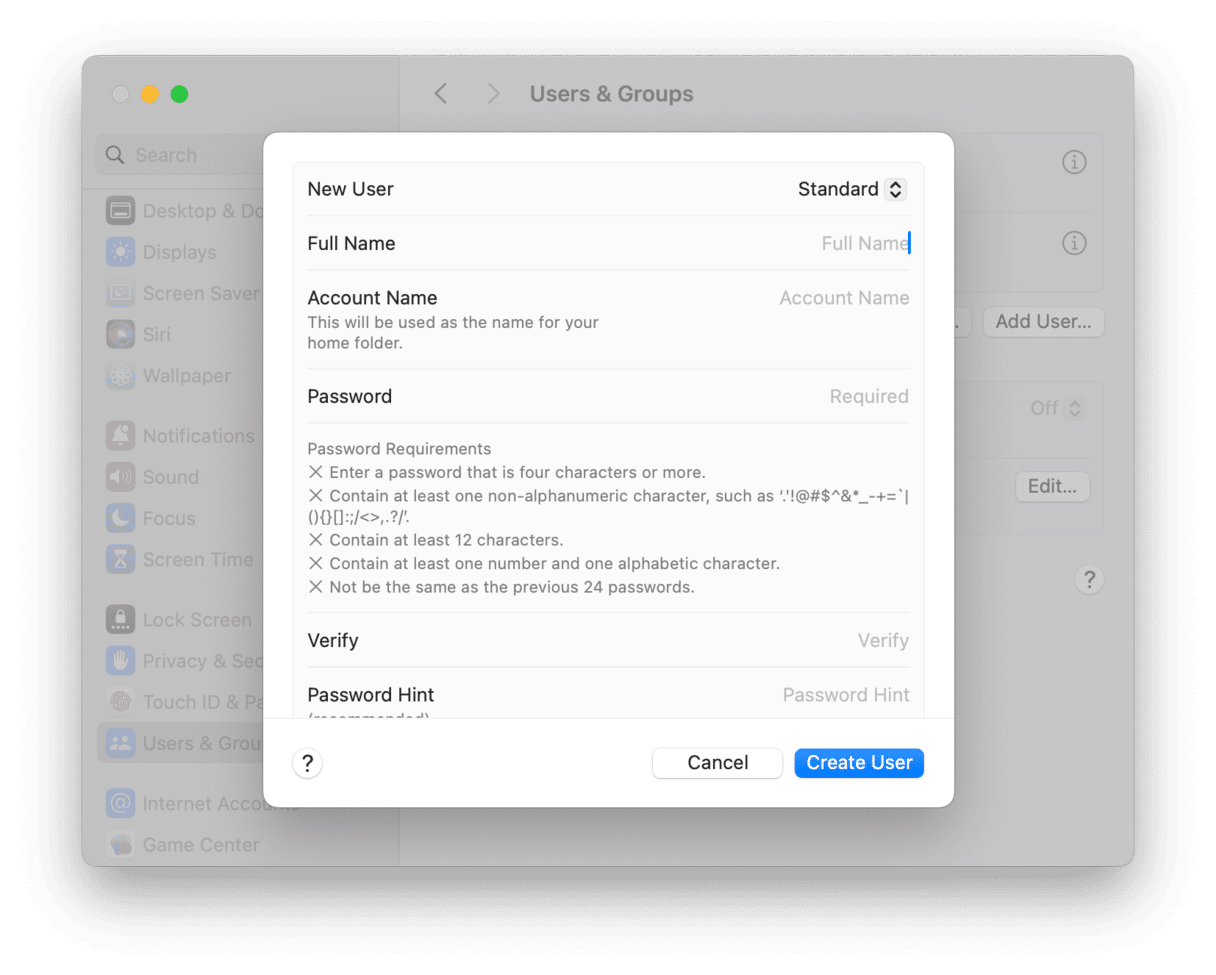
4. Keep your browser up to date
Google Chrome can be set to update itself automatically, which is the safest way to do it. If you don’t want it to do that, make sure you install updates manually as soon as Chrome alerts you that it’s out of date.
5. Keep macOS up to date
Apple issues security updates for the current version of macOS and older versions as well. If you see one on the App Store or macOS alerts you that an update is available, install it.
Go to Apple Menu > System Settings > General > Software Update.

6. Watch out for bogus warnings
One of the biggest scams on the internet is pop-ups telling you that your computer has a virus. If you see one, ignore it.
In addition to preventing malware, there are a number of things you can do to reduce the damage malware:
- Keep your personal data safe. Never store sensitive data like usernames, passwords, or credit card details as plain text. Use a password manager that will encrypt everything.
- Back up your Mac regularly. If you use Time Machine to back up your Mac and the worst happens, you can roll back to a point just before your Mac was infected. Or you can recover individual files that have become corrupt.
Final tip: Check which apps have too wide permissions
There is a chance that a malware app will want to hijack your camera or a mic. Sometimes, you don’t even know you’ve allowed an app to do certain things. It could happen inadvertently.
The mentioned Mac cleaner, CleanMyMac, has a handy console for checking and adjusting permissions.
- Run the free version of CleanMyMac.
- Go to Protection from the sidebar and run a quick scan.
- Once complete, click Manage Privacy Items and select Application Permissions.
_1623409623.png)
This way, you can grant and revoke permissions to the camera, mic, or other vital parts of your Mac. For example, if you believe your Chrome app has a virus, you can ban it here from using your camera.
As you can see, it’s not too difficult to remove Chrome malware or remove adware from Chrome. However, it’s much better if you avoid downloading malicious code at all. If you follow the steps at the end of this article, you’ll make sure your Mac and the Chrome browser are both as safe as they can be.
FAQ
Can Google Chrome get viruses?
The short answer is yes. Like any other browser, Google Chrome is susceptible to different forms of malware, including viruses.
Why am I getting spam notifications from Chrome?
If you continue getting spam notifications from Chrome, you are either being scammed due to visiting a malicious website or have already been infected by malware.
How to remove shopping deals from Chrome?
To remove shopping deals, you will have to reset settings in Google Chrome by going to Settings > Reset Settings.






